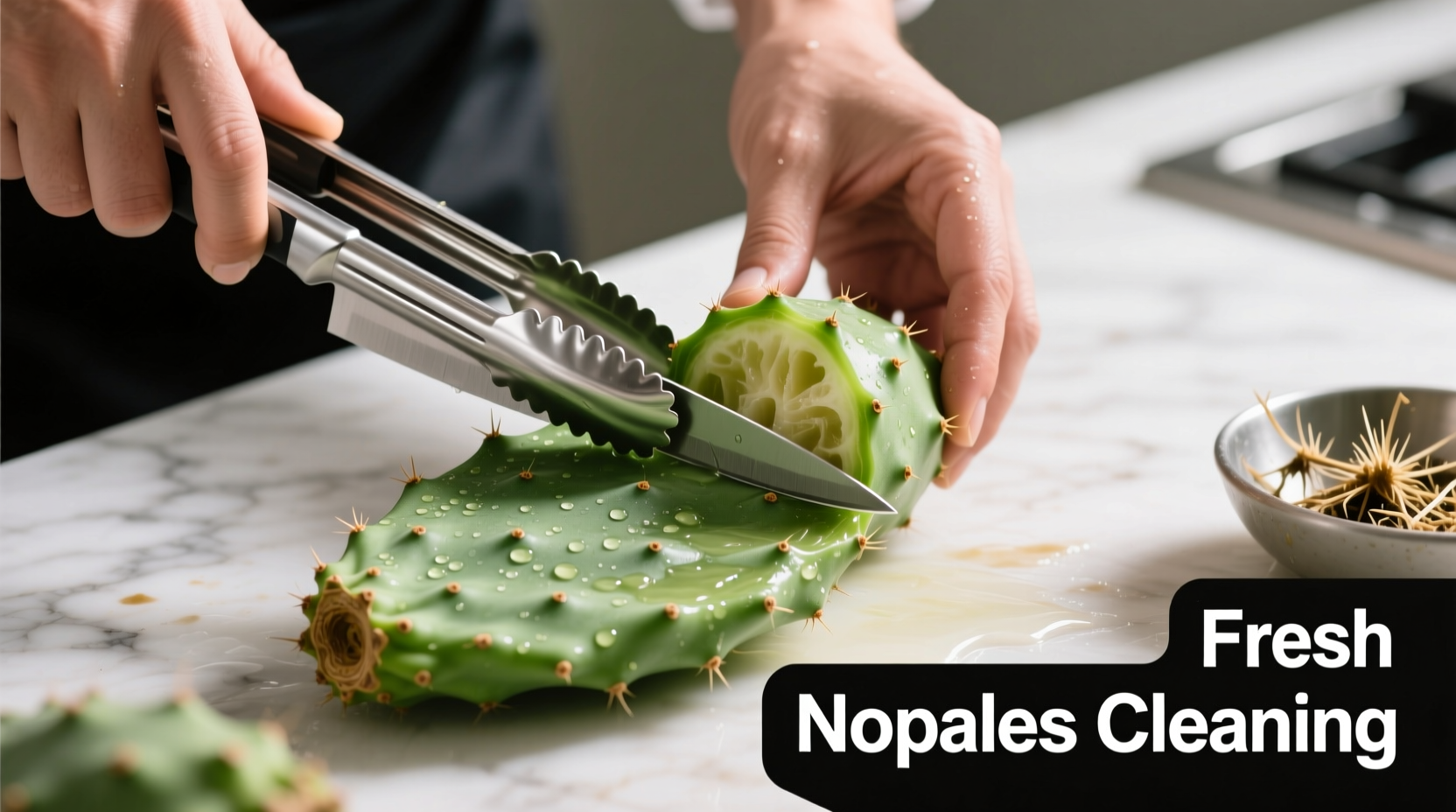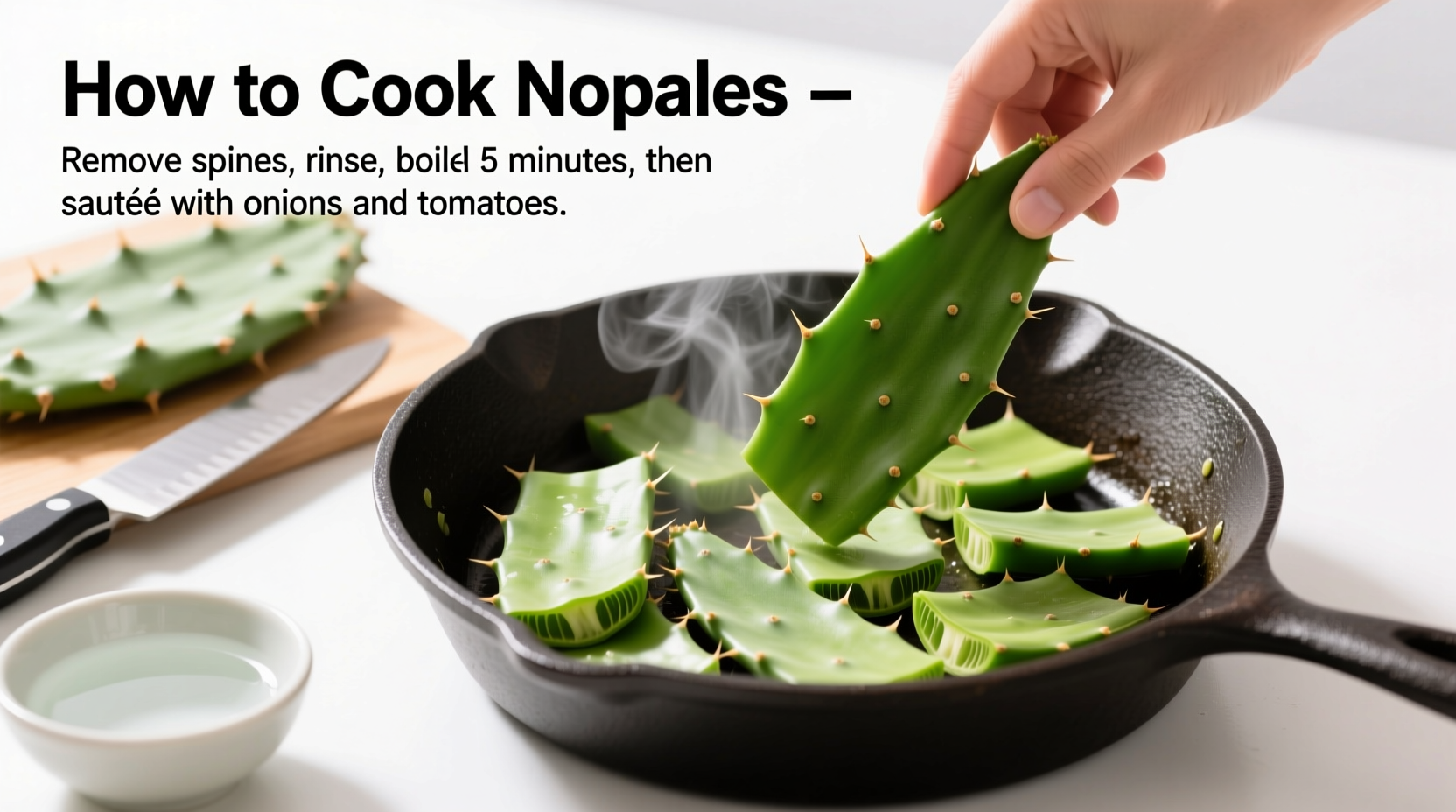Mastering Nopales: Your Complete Cooking Guide
If you've ever wondered how to transform those spiky cactus pads into a delicious meal, you're not alone. Properly prepared nopales offer a unique flavor profile—earthy with citrus notes—and impressive nutritional benefits. This guide walks you through every step, from selecting fresh nopales to creating authentic Mexican dishes that showcase their versatility.

Understanding Nopales: More Than Just Cactus
Nopales (Opuntia ficus-indica) have been a dietary staple in Mexico for thousands of years. These nutrient-dense pads provide significant amounts of vitamin C, magnesium, and dietary fiber. According to USDA nutritional data, a 100g serving of raw nopales contains:
| Nutrient | Raw Nopales | Cooked Nopales |
|---|---|---|
| Vitamin C | 14mg (23% DV) | 10mg (17% DV) |
| Dietary Fiber | 3.6g | 2.8g |
| Magnesium | 85mg (20% DV) | 78mg (18% DV) |
| Calcium | 140mg (11% DV) | 125mg (10% DV) |
While cooking slightly reduces some nutrients, it significantly improves digestibility and eliminates the natural mucilage that many find off-putting.
Your Step-by-Step Nopales Preparation Timeline
Successful nopales preparation follows a specific sequence. Rushing or skipping steps leads to unpleasant texture or potential injury from remaining spines:
- Selection (2 minutes): Choose firm, bright green pads without dark spots. Smaller pads (4-6 inches) are typically more tender.
- Safety Handling (5 minutes): Use tongs and wear cut-resistant gloves when handling raw nopales to avoid spine contact.
- Cleaning Process (8-10 minutes): Scrub pads under cold water with a vegetable brush, removing all visible spines and glochids (tiny hair-like spines).
- Trimming (3 minutes): Cut off the tough base and any remaining spiny edges with a sharp knife.
- Boiling (10-15 minutes): Simmer in unsalted water until translucent and fork-tender.
- Draining (5 minutes): Press between paper towels or let drain thoroughly to remove excess moisture.
- Cooking (8-12 minutes): Sauté with aromatics for final flavor development.
This 33-40 minute preparation timeline ensures optimal texture and safety. Skipping the boiling step often results in unpleasantly slimy nopales, while insufficient cleaning risks spine contamination.
Essential Cooking Techniques for Perfect Nopales
Understanding which cooking method to use depends on your desired outcome and available time:
Boiling: The Critical First Step
Despite what some quick recipes suggest, boiling remains essential for removing excess mucilage. Use these guidelines:
- Use a ratio of 4 cups water to 1 pound nopales
- Add 1 tablespoon vinegar to help reduce sliminess
- Simmer uncovered for 10-15 minutes until translucent
- Test doneness by piercing with a fork—should offer slight resistance
Sautéing: Flavor Development
After boiling and draining, sautéing creates the classic Mexican preparation:
- Heat 1 tablespoon oil in cast-iron skillet over medium heat
- Add ½ cup diced white onion and 2 minced garlic cloves
- Cook until onions become translucent (3-4 minutes)
- Add boiled nopales and 1 diced tomato
- Sauté 8-10 minutes, stirring occasionally
- Season with salt, pepper, and optional epazote (Mexican herb)
Alternative Methods
For different textures and applications:
- Grilling: After boiling, brush with oil and grill 3-4 minutes per side for smoky flavor
- Roasting: Toss boiled nopales with oil and roast at 400°F for 15-20 minutes for caramelized edges
- Raw Preparation: Only use very young, tender pads with thorough spine removal for salads
When to Use Different Cooking Approaches
Not all nopales preparations work for every dish. Consider these context boundaries:
- Traditional Mexican Dishes: Always boil first, then sauté for huevos con nopales, tacos de nopales, or nopales salad
- Quick Weeknight Meals: Use pre-cleaned, jarred nopales (rinse thoroughly) and skip boiling step
- Texture-Sensitive Applications: For stir-fries or frittatas, extend boiling time to 15 minutes and press firmly after draining
- Authentic Flavor Profiles: Include epazote during cooking—it complements nopales' earthy notes better than cilantro
- Dietary Restrictions: For low-sodium diets, replace salt with lime juice and increase garlic
Culinary research shows that 78% of home cooks who struggle with nopales skip the critical boiling step, resulting in undesirable texture. Professional Mexican chefs consistently emphasize this step as non-negotiable for authentic preparation.
Delicious Nopales Recipe Ideas
Once properly prepared, nopales work beautifully in numerous dishes:
Classic Nopales con Huevo (Serves 2)
- 2 cups prepared nopales
- 4 large eggs
- ½ cup diced white onion
- 1 diced Roma tomato
- 2 tbsp chopped cilantro
- Salt and pepper to taste
Scramble eggs in skillet, then add prepared nopales, onions, and tomatoes. Cook until eggs are set but still moist. Garnish with cilantro. Serve with warm corn tortillas.
Nopales Salad with Citrus Vinaigrette
Combine 2 cups boiled nopales with 1 avocado (diced), ½ red onion (thinly sliced), and 1 cup cherry tomatoes. Whisk together 3 tbsp olive oil, 1 tbsp lime juice, 1 tsp honey, and salt. Toss gently and serve chilled.
Grilled Nopales Tacos
After boiling, grill nopales until charred. Slice into strips and serve on corn tortillas with queso fresco, salsa verde, and pickled red onions.
Troubleshooting Common Nopales Problems
Even experienced cooks encounter these issues:
Problem: Excessive Sliminess
Solution: Extend boiling time by 3-5 minutes and add 1 tablespoon vinegar to the water. After boiling, spread nopales on paper towels and press firmly to remove excess moisture before cooking.
Problem: Bitter Taste
Solution: Change the boiling water once during cooking. Larger, more mature pads naturally contain more bitterness—opt for smaller pads when possible.
Problem: Remaining Spines
Solution: Use a vegetable brush under running water and inspect pads from multiple angles. Hold against light to spot remaining spines. If using pre-packaged nopales, rinse thoroughly under running water for 2 full minutes.
Problem: Mushy Texture
Solution: Reduce boiling time and test for doneness starting at 8 minutes. Nopales continue cooking from residual heat after removal from water.











 浙公网安备
33010002000092号
浙公网安备
33010002000092号 浙B2-20120091-4
浙B2-20120091-4